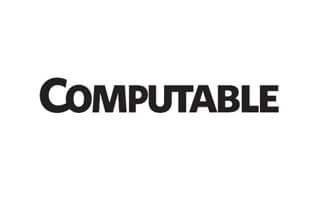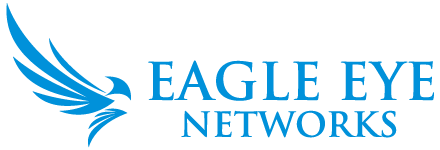
Software for the analysis of video images and artificial intelligence (artificial intelligence, ai) determine the future of camera surveillance. Dean Drako, co-founder of Barracuda Networks, aims with his Eagle Eye Networks for a future in which cameras not only work smartly but also take over a lot of work. “Then fewer guards will be needed.”
According to Dean Drako of Eagle Eye Networks, the new ai-driven cloud applications bring safety to the workplace, in stores and factories, to a higher level. Security is largely automated. The monitoring and giving of alarms are automatic.
Camera systems not only serve safety but also help improve business processes. Currently, only one in every hundred cameras has a different function than safety. But that is shifting. “Forty percent of the cameras will contribute to business intelligence,” predicts Drako.
In 2004 when Computable spoke with Dean Drako, the American had invented the first box for filtering spam and stopping viruses. “The Barracuda Networks spam firewall was already working in the cloud. The automated updates for the spam definitions also came from there, ‘according to Drako, who recently visited Amsterdam.
Now fifteen years later Drako’s new company Eagle Eye Networks (EEN) works with the same as Barracuda. Between the (security) cameras and the internet and the cloud is a ‘bridge’, a box that stops intruders. So hackers can not get directly to the cameras. This piece of hardware at the customer’s location connects the cameras to the cloud. This bridge acts as a bridge between the security and the IT.
DNA
Cyber security and it are in Drako’s DNA which has numerous patents in the field of network security and protocols and software. The bridge must increase trust in the cloud. And that is badly needed because very few companies are doing video surveillance in the cloud. Rishi Lodhia, managing director of Eagle Eye Networks in Europe, estimates the percentage below ten.
Fourteen years ago he founded, together with technical director Tijmen Vos, Cameramanager, a company for video in the cloud that later merged with Panasonic. Lodhia noticed that the combination of monitoring data and the cloud is rather sensitive here and there. But after the acquisition of his company by Eagle Eye Networks, which has made security the cornerstone of architecture, he expects less resistance. After all, everything moves towards the cloud. The company is convinced that video security is no exception.
Analysis
The big plus is in the analysis software. Updates can be installed remotely regardless of the type of camera that the customer has. The cloud is crucial in this. Eagle Eye Networks works with analytics from partners, in addition to its own analytics. Open APIs facilitate the integration of third-party analytics. “Video analysis makes systems smarter, more accurate and better managed”
Systems for video surveillance produce gigantic streams of video. Due to lack of time or too few staff, most video is left unattended, says Axis, market leader in network video. The result is that security incidents are missed. Suspicious behavior is not noticed in time, which creates risks. Video analysis makes systems smarter, more accurate and better to manage.
Drako distinguishes several types of analytics. ‘The easiest way is software that detects when objects cross a virtual line. Equally available is analytics for the detection of intruders who come to forbidden territory. Also counting objects that cross a line in both directions is easy. Finally, software is used that monitors a delimited area and warns when someone is hanging around longer than usual. ‘
Resolution
More advanced is analytics where multiple cameras are used or the link to a database such as a license plate registration is required. Drako: ‘This software works much better in the cloud. Facial recognition also only makes sense if a database of people is available. Furthermore, the usability of the resolution depends. You have to be able to see someone’s face well. ” In addition, the classification of objects such as cars, people, bicycles and pets has improved considerably.
Drako: ‘The question, however, is what you can do with it. One of the most important applications is the reduction of false alarms. We use these classifications as a filter. Classifications are not ready for local use in the camera, but they already work well in the cloud. This is done in combination with simple analysis methods. ‘
Drako sees that classification of objects does not happen quickly with edge computing at the edge of the network. ‘A lot of computer power is needed for this. You are also dependent on the cloud for the storage of data. This certainly applies to advanced analyzes. ‘
Accuracy
As mentioned, the applications are not limited to security. In attendance are business applications including counting visitors to shops, determining waiting times, automatic invoicing in parking garages and demographics of buyers.
According to Drako, most applications of ai are still in the research and development phase. ‘Commercially successful applications are virtually non-existent. The results still lack accuracy. In addition, the analysis models must be trained with very large amounts of data. Problem also is that this requires a huge amount of computer power and storage capacity. ‘
Also competitor Axis sees little impact. Cto Johan Paulsson speaks of a steady development. Drako: ‘But in the future ai will certainly be big. Once the neural networks are properly trained it can go fast. Camera systems will therefore become very smart. If they know which patterns are normal, they can accurately recognize anomalies and make an alarm. ‘
Trump
It is important that the api’s with which software can communicate with each other are open. This way, an ecosystem for cloud video surveillance and related applications can quickly be created. The market is still in its infancy. ‘
Will the video and surveillance management system also be used for the wall with which President Trump wants to stop immigrants? “Well if the Mexicans are prepared to pay for this,” Drako jokes. Seriously: ‘We prefer to focus on the business sector where decisions are made more quickly and the purchasing process is tighter than the government. And local authorities work more fluently than the federal government. ‘
Other posts that might interest you

Wall Street Journal – The Daily Startup: Barracuda Networks Co-Founder Launches Video Surveillance Startup
Barracuda Networks Inc. co-founder Dean Drako is launching another company–Eagle Eye Networks Inc., a startup that aims to do for video surveillance what Dropbox did for file sharing by making…
June 26, 2014
Dow Jones: Serial Entrepreneur and Ex-Barracuda CEO Launches Eagle Eye Networks to Take Video to the Cloud
Dow Jones wrote about our Founder and our Launch. Click Here to read the full article (pay wall)
January 21, 2014
Security Info Watch: Eagle Eye Networks enters VMS market
Barracuda Networks Founder Dean Drako discusses why he started a video security company. Click Here To Read the Full Article
January 23, 2014





